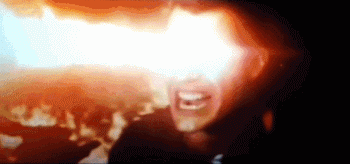

But Superman later got upgraded to the classic "faster than a speeding bullet" - which is about 1,800 miles per hour. (And technically, that record was set after Action Comics #1 had hit the stands!) That's still faster than the fastest human ever recorded - Usain Bolt's been clocked at 27.8 mile per hour, so Superman's still four and a half times faster than the fastest human ever, and that could qualify as super speed. The world record speed for trains in 1938 was 126 miles per hour. Or how about a classic like super speed? Easy, right? It's noted right there on the first page of his first appearance, he can "run faster than an express train." Well, that's not all that fast, honestly. Although he performs the feat again and again, using various descriptions, it's not until Action Comics #275 that it's expressly called heat vision.
#When did superman get xray vision full#
with "the full strength of my x-ray powers." He uses "the full terrific force of those x-ray eyes" similarly in Action Comics #139 a few months later to burn a wooden bridge. In Superman #59, he tries to look inside a glacier with his x-ray vision, but can't. So in doing some digging into Superman's powers, I was surprised at how amazingly hard it is to pin down when many of them first appeared. That makes sense." I've seen listings of his powers generally and a handful of "Superman's strangest powers" and that kind of thing, but I hadn't come across anything like what I was thinking of.

"Oh, yeah - 1960, Curt Swan art, middle of the space race. Is that a 1950s story? 1960s? 1970s? By providing the cover and a date, I think it would give folks a visual and chronological reference to what was going on culturally at the time. I mean, you can say he first displayed the ability to time travel in Superman #141, but I don't think that really registers even with most comics fans. I thought the idea of not just mentioning what issue a power debuted in, but providing the cover might be interesting to provide some context to the era of comics at the time. Primo – an upcoming freevee show inspired by Shea Serrano’s life in San Antonio - following a teenager balancing the responsibilities of society, college, and home with the support of his mother and five uncles.I had this idea a little while back to do a Twitter thread where I posted each of Superman's powers in the order they were first mentioned/used and the cover of the issue where they first appeared.

Send a short pitch and 2-3 minute voice memo recording to that answers the following questions: 1) How did you get into/discover your ‘Nerd Out?’ (2) Why should we get into it too? (3) What’s coming soon in this world that we can look forward to or where can we find it?įollow Crooked Uncultured on Twitter & IGĬheck out the unofficial X-Ray Vision Discord Tune in every Friday and don’t forget to Hulk Smash the Follow button! (Note: this interview was recorded pre any and all Comic Con news.) Then, in Nerd Out (2:26:31) listener Frances pitches us on RuPaul’s Drag Race.

Ali, exploring their mutual comic book origins in London, Bisha’s approach to writing, the challenge and gratification of exploring Partition, and of course that insane finale reveal. In the Hive Mind (2:02:39), Rosie sits down for a charming chat with Ms. In the Airlock (1:01:29), Jason and Rosie dive deep (deeeep) into the summer of 1982 and specifically the sci-fi flick Blade Runner – discussing the various cuts, the score, the dystopian vision, the legacy, whether Deckard is a replicant, and more with a special appearance by producer (and Blade Runner fan) Saul. On this episode of X-Ray Vision, Jason Concepcion and Rosie Knight hard boil some eggs with JF Sebastian! First in Previously On (9:05), they discuss Rosie’s Den of Geek cover story on Black Adam (see below) and what to expect from Marvel Studios at Comic Con – including an extended X-Men fan cast.


 0 kommentar(er)
0 kommentar(er)
